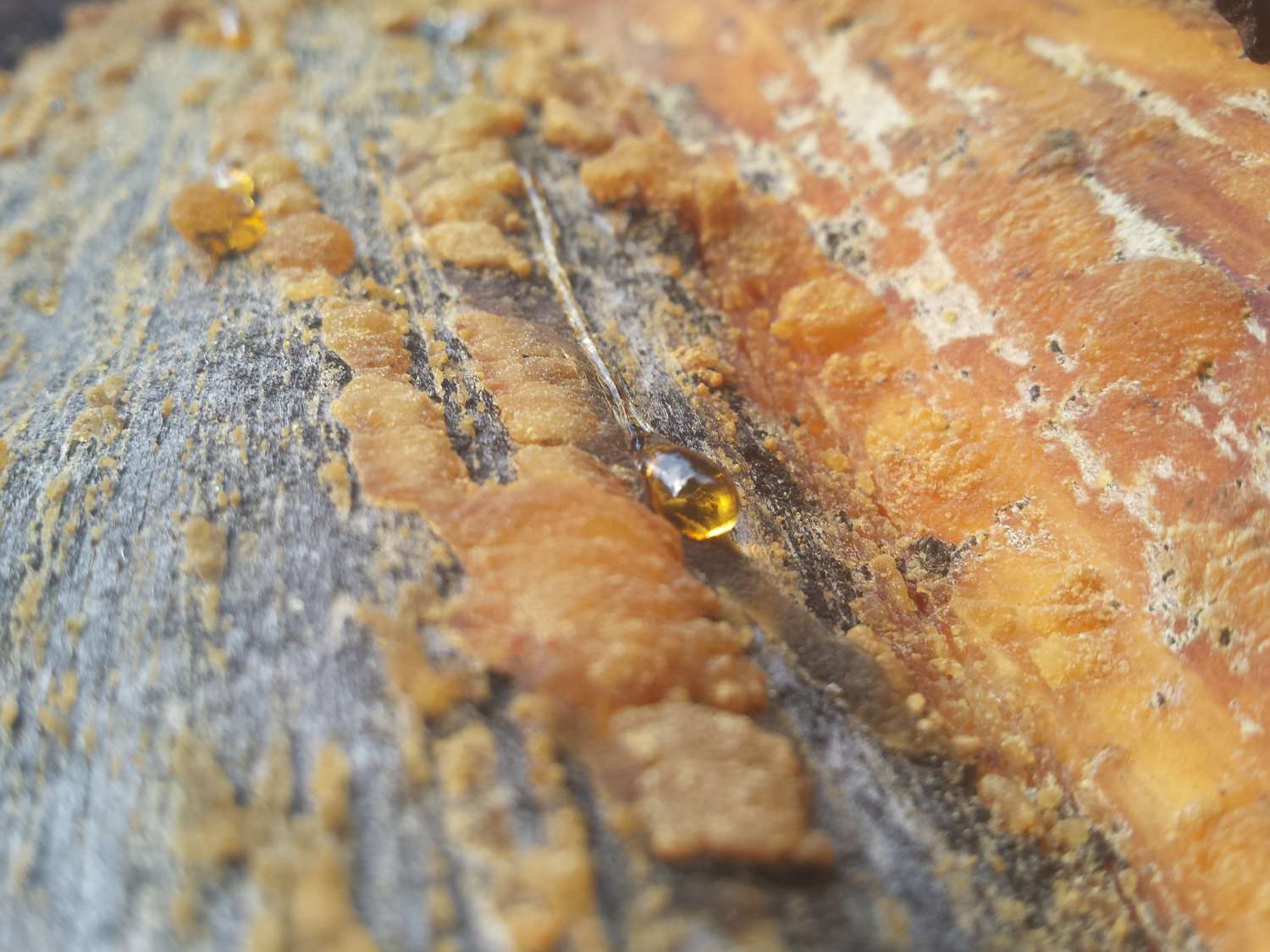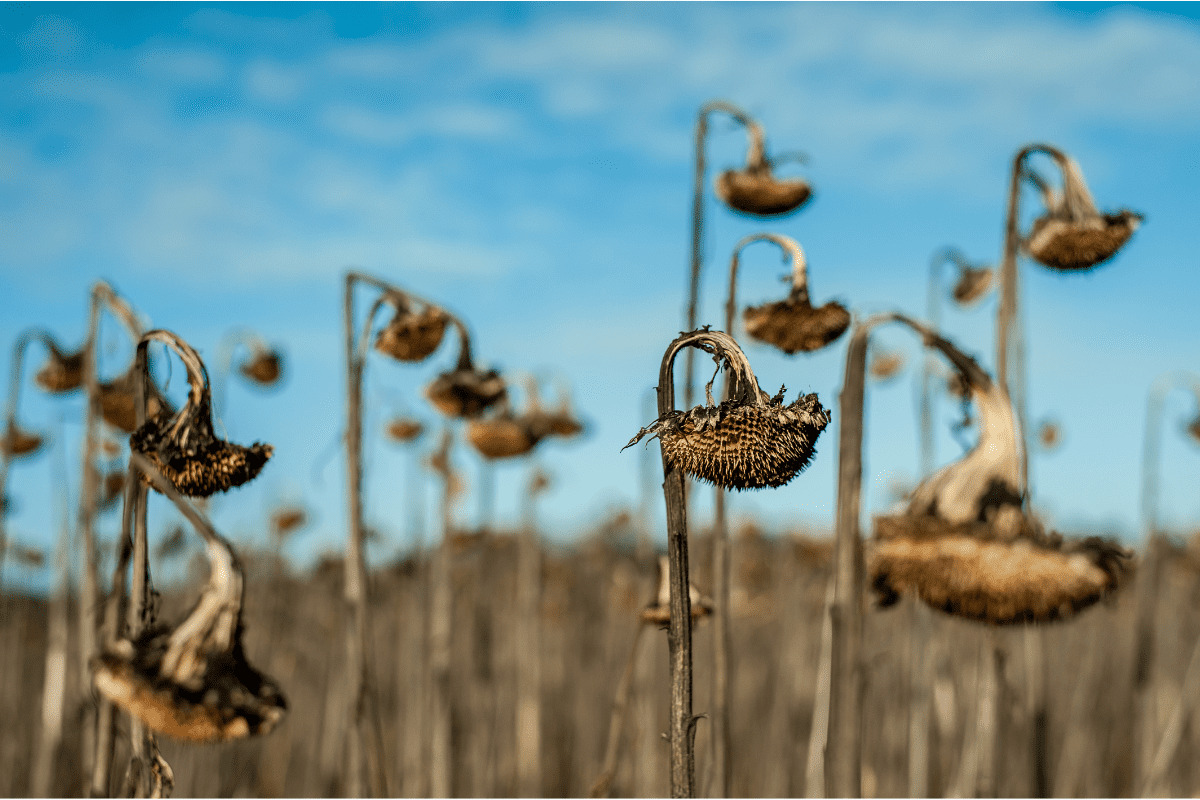Home>Gardening Techniques>Plant Care>Why Do Trees Die


Plant Care
Why Do Trees Die
Modified: February 6, 2024
Discover the common reasons why trees die and learn essential plant care tips to keep your trees healthy and thriving.
(Many of the links in this article redirect to a specific reviewed product. Your purchase of these products through affiliate links helps to generate commission for Chicagolandgardening.com, at no extra cost. Learn more)
Table of Contents
Introduction
Plant care is a crucial aspect of maintaining a vibrant and thriving landscape. Whether you have a beloved garden full of flowers or a backyard adorned with majestic trees, it’s disheartening to witness the decline and eventual death of these living organisms. Understanding the reasons behind tree mortality can help us prevent such losses and ensure the longevity of our green spaces.
Trees are remarkable creatures that provide us with numerous benefits, including shade, clean air, and aesthetic beauty. However, they can also be susceptible to various environmental, biological, and human-caused factors that can lead to their demise. This article intends to shed light on the common reasons why trees die and how we can mitigate these issues to promote their health and survival.
It’s essential to note that trees are living organisms with specific requirements to thrive. When these requirements are not met, they can experience stress, making them vulnerable to diseases, pests, and other detrimental factors. By understanding these factors, we can take proactive measures to prevent tree loss and promote a healthy and thriving plant ecosystem.
Throughout this article, we will explore the different factors that contribute to tree mortality. We will discuss environmental factors such as extreme weather conditions, disease and pest infestations, inadequate water and nutrient availability, soil conditions, competition for resources, and the natural lifespan of trees. Additionally, we will address human activities that can impact tree health and offer suggestions for proper tree care and maintenance.
By gaining a deeper understanding of the causes of tree death, we can play an active role in creating and fostering a sustainable environment for our beloved plant companions. So let’s delve into the various factors that can lead to the demise of trees and learn how to protect and nurture them for years to come.
Environmental Factors
Environmental factors play a significant role in the health and longevity of trees. Trees are susceptible to extreme weather conditions, such as prolonged droughts, intense heatwaves, freezing temperatures, and strong winds. These conditions can cause stress to the trees, leading to weakened immune systems and increased vulnerability to diseases and pests.
Drought, in particular, is a major threat to tree survival. When there is insufficient rainfall or irrigation, trees may not receive an adequate water supply, resulting in dehydration and wilted leaves. Extended periods of drought can also affect the root system, hindering their ability to absorb water and nutrients from the soil.
Similarly, excessive heat can cause damage to tree tissues and disrupt their physiological processes. Heat stress can lead to leaf scorch, where the edges of leaves turn brown and crispy. High temperatures can also accelerate water evaporation, further exacerbating the effects of drought on tree health.
On the other hand, freezing temperatures and frost can cause significant damage to tree cells and tissues. When water inside the tree freezes, it expands, leading to the rupture of cells. This can result in tissue damage, with symptoms such as bark splitting and dieback becoming apparent during warmer seasons.
Strong winds are another environmental factor that can impact tree health. Violent gusts can cause breakage or uprooting, especially in trees with weak or damaged root systems. Additionally, constant exposure to strong winds can lead to the desiccation of leaves and increased water stress.
It’s important to note that while trees have the innate ability to adapt to their environment, they can only withstand a certain degree of stress. Severe and prolonged exposure to extreme environmental conditions can exceed their tolerance levels, leading to a decline in health and eventual death. Therefore, it’s crucial to monitor and mitigate these environmental factors to maintain the well-being of trees.
To mitigate the effects of extreme weather conditions, implementing strategies such as mulching, proper irrigation, and windbreaks can be beneficial. Mulching helps protect the root system, retain moisture, and regulate soil temperature. Adequate irrigation, whether through natural rainfall or artificial means, is vital to ensure trees receive sufficient water. Windbreaks, such as fences or other structures, can help reduce the impact of strong winds and shield trees from their damaging effects.
Overall, understanding and addressing the environmental factors that can impact tree health is crucial for maintaining their longevity and vitality. By implementing appropriate measures to protect trees from extreme weather conditions, we can create a resilient and flourishing plant ecosystem.
Disease and Pests
Diseases and pests are common threats to tree health and can significantly contribute to their decline and eventual death. Trees can be susceptible to various diseases caused by bacteria, fungi, and viruses. Likewise, pests such as insects, mites, and rodents can inflict significant damage to tree tissues, roots, and leaves.
Diseases can manifest in different ways, including leaf spots, cankers, wilting, and rot. Fungal infections, such as anthracnose and powdery mildew, can cause leaf discoloration and distortion. Bacterial infections, like fire blight and bacterial leaf scorch, can result in wilting, necrosis, and overall decline of the tree’s health. Viral infections are less common in trees but can still cause observable symptoms, such as stunting and abnormal growth patterns.
Pests, on the other hand, can cause direct damage by feeding on tree tissues and roots or indirectly by transmitting diseases. Insects like aphids, beetles, and caterpillars can defoliate trees and weaken their overall structure. Root-feeding pests, such as termites and grubs, can disrupt the tree’s ability to absorb water and nutrients, leading to nutritional deficiencies and decline.
Taking proactive measures to prevent and manage diseases and pests is vital for maintaining tree health. Regular tree inspections can help identify early signs of infections or infestations, allowing for prompt intervention. Pruning affected branches and removing infected debris can help minimize the spread of diseases. Applying appropriate fungicides, insecticides, or biological control methods can also be effective in managing pests and diseases.
However, it’s important to strike a balance between managing diseases and pests and maintaining the overall health of the tree and its surrounding ecosystem. Utilizing environmentally friendly and sustainable pest and disease management practices is crucial to prevent further harm to beneficial insects, birds, and other organisms that contribute to the natural balance of the ecosystem.
Additionally, promoting tree vigor through proper care practices can enhance their natural defenses against diseases and pests. Providing optimal growing conditions, such as adequate sunlight, proper soil drainage, and regular fertilization, can boost the tree’s immune system and resilience.
Regularly monitoring and addressing diseases and pest issues is crucial for preventing significant damage and ensuring the long-term survival of trees. By being vigilant and implementing appropriate management strategies, we can protect our trees from the threats posed by diseases and pests and preserve the beauty and functionality they bring to our surroundings.
Lack of Water and Nutrients
Water and nutrients are essential for the growth and survival of trees. When trees lack an adequate supply of water and nutrients, their health and vitality can deteriorate, leading to stunted growth, leaf discoloration, and eventual death.
Insufficient water availability can be a result of several factors, including drought, improper irrigation, or poor soil drainage. Inadequate irrigation practices, such as infrequent watering or shallow watering, can lead to shallow root growth and limited access to water reserves in the soil. This can cause water stress in trees, as their roots are unable to reach the deeper soil layers where moisture is retained during dry periods.
Lack of proper nutrients can also impair tree health. Trees require a balance of macronutrients (such as nitrogen, phosphorus, and potassium) and micronutrients (such as iron, zinc, and manganese) for optimal growth and function. When these nutrients are deficient in the soil, trees may exhibit symptoms such as yellowing leaves, stunted growth, and overall decline in vigor.
Improving water and nutrient availability is crucial for preventing tree mortality. Mulching can help retain soil moisture and regulate soil temperature, reducing water stress in trees. Additionally, proper irrigation techniques, such as deep watering and regular monitoring of soil moisture levels, can ensure that trees receive sufficient water.
Regular soil testing can help identify nutrient deficiencies, allowing for targeted fertilization based on the tree’s requirements. Balanced fertilizers or specific nutrient supplements can be applied to replenish the missing nutrients and promote healthy tree growth.
Furthermore, maintaining soil health is essential for enhancing water and nutrient availability. Proper soil conditioning, such as adding organic matter, can improve soil structure and water-holding capacity. Amending compacted soils can also enhance root penetration, allowing trees to access water and nutrients more effectively.
It’s important to note that overwatering and excessive fertilizer application can also be detrimental to tree health. Both practices can lead to nutrient imbalances, root suffocation, and increased susceptibility to diseases and pests. Therefore, it’s crucial to strike a balance and provide trees with the appropriate amount of water and nutrients they need for optimal growth.
By ensuring sufficient water and nutrient availability, we can help prevent the decline and death of trees. Implementing proper irrigation practices, regular soil testing, and appropriate fertilizer application can promote the overall health and longevity of our trees.
Soil Conditions
The quality and condition of the soil in which trees are planted play a vital role in their health and survival. Soil provides a foundation for root development, nutrient absorption, and water storage. When soil conditions are unfavorable, trees can experience stress and face challenges in obtaining the necessary resources for growth and sustenance.
Poor soil drainage is a common issue that can lead to tree mortality. When soil is poorly drained, excessive water accumulates around the roots, depriving them of oxygen. This lack of oxygen can impede root growth and promote the growth of harmful microorganisms. Over time, this can lead to root rot and the decline of the tree’s health.
Compacted soils can also negatively impact tree health. Heavy foot traffic, construction activities, or machinery can compact soil particles, reducing pore space and limiting water infiltration and root penetration. Compacted soils restrict root growth, making it difficult for trees to access water and nutrients necessary for their survival.
pH imbalances in the soil can also affect tree health. Soil pH levels outside the tree’s preferred range can inhibit nutrient availability. Acidic soils (low pH) may result in nutrient deficiencies, while alkaline soils (high pH) can lead to nutrient imbalances and impaired nutrient uptake.
To improve soil conditions, several measures can be taken. For poorly drained soils, implementing drainage systems or raised beds can help improve water movement and prevent waterlogging. Aerating compacted soils can alleviate compaction, improve root penetration, and enhance water and nutrient absorption.
Soil testing can provide valuable information about the pH, nutrient levels, and organic matter content in the soil. Based on the test results, appropriate amendments can be added to adjust the pH or replenish nutrient deficiencies. Adding organic matter, such as compost or well-rotted manure, can improve soil structure, water-holding capacity, and nutrient availability.
It’s also important to consider the type of soil when selecting tree species for planting. Different tree species have varying soil preferences, with some thriving in well-drained sandy soil, while others preferring heavier clay soil. Matching the tree species to the soil type can increase the chances of successful growth and overall health.
By addressing soil conditions and providing an optimal environment for root development, we can enhance tree health and increase their resilience to various stressors. Implementing proper soil management practices and considering soil quality when selecting tree species can contribute to the long-term survival and vibrancy of our trees.
Competition for Resources
Competition for resources is a significant factor that can impact the health and survival of trees. In natural environments, trees often have to compete with surrounding vegetation for essentials like sunlight, water, and nutrients. When this competition becomes intense, it can have detrimental effects on tree growth and overall health.
Sunlight is crucial for trees, as it provides the energy needed for photosynthesis, the process by which they produce their own food. When trees are crowded and overshadowed by taller or denser vegetation, they may struggle to receive sufficient sunlight. This can lead to weakened growth, reduced foliage density, and lower energy production.
Water availability is another critical resource that trees must compete for in some environments. In areas prone to drought or with limited water sources, trees may face challenges in obtaining adequate water to meet their needs. When competing plants consume a significant portion of available water, trees can experience drought stress, leading to leaf wilting, stunted growth, and overall decline in health.
In addition to sunlight and water, trees also compete for nutrients in the soil. Nutrients, such as nitrogen, phosphorus, and potassium, are essential for a tree’s growth and development. However, when soil conditions are nutrient-poor or when other competing vegetation aggressively absorbs nutrients, trees can suffer from nutrient deficiencies. This can result in poor foliage color, reduced growth, and increased susceptibility to diseases and pests.
Managing competition for resources is crucial in ensuring the well-being of trees. When planting trees, it’s important to consider their spacing requirements and provide ample distance between neighboring trees and other vegetation. This allows each tree to have access to sufficient sunlight, water, and nutrients without intense competition.
Pruning and thinning overcrowded tree canopies can help increase sunlight penetration, promoting healthy growth. Proper irrigation practices and water management strategies can also ensure that trees receive adequate water, even in competitive environments. Applying organic mulch around the base of trees can help suppress weed growth and conserve soil moisture, reducing competition for water and nutrients.
In cases where competition with invasive plants is a significant issue, implementing targeted removal or control methods can help reduce their impact on tree health. It’s important to consult with experts or local gardening resources to determine appropriate methods for managing competition from specific invasive species.
By managing competition for resources, we can provide our trees with the best chance for growth and survival. Creating a favorable environment where trees have access to sufficient sunlight, water, and nutrients can promote their overall health and resilience.
Age and Natural Lifespan
Age is an important consideration when it comes to tree health and mortality. Just like any living organism, trees go through a natural life cycle, starting from seed germination, maturation, reproduction, and eventual decline. Understanding the natural lifespan of trees is crucial for managing their health and recognizing when age-related factors may contribute to their death.
Different tree species have varying lifespans, ranging from a few decades to several centuries. Some short-lived species may only survive for 20 to 30 years, while certain long-lived species like oak or sequoia can live for hundreds or even thousands of years. The lifespan of a tree is influenced by factors such as genetics, environmental conditions, and overall tree health.
As trees age, they naturally go through physiological changes that can affect their health. The efficiency of nutrient absorption, water transport, and energy production may decline over time. This can lead to reduced vigor, slower growth, and increased vulnerability to diseases and pests.
In addition to physiological changes, the structural integrity of older trees may also become compromised. The development of decay, cavities, and cracks in the trunk or branches can weaken the tree’s structure, making it more susceptible to breakage or collapse during severe weather events. These structural issues, coupled with reduced vitality, can ultimately result in the death of the tree.
While age-related factors can contribute to tree mortality, it’s important to note that not all trees die of old age. Other factors, such as diseases, pests, or environmental stresses, can accelerate the decline and death of trees, even at a relatively young age.
Proper care and maintenance can help extend the lifespan of trees. Regular inspections by qualified arborists can help identify potential issues, allowing for proactive measures to be taken. Pruning can help maintain a balanced crown structure and reduce the risk of branch failure. Fertilization and irrigation can provide the necessary nutrients and water for older trees to thrive.
When managing older trees, it’s important to strike a balance between maintaining their health and preserving their natural aesthetics. Some aging trees may show signs of decline, such as dead branches or sparse foliage. In these cases, it may be necessary to assess the risks they pose and make informed decisions regarding their management, including potential removal and replanting.
Understanding the natural lifespan of trees and implementing appropriate care practices can help us appreciate and protect these remarkable organisms for as long as possible. By recognizing the age-related factors that can contribute to tree mortality and taking proactive measures, we can ensure the longevity and beauty of our trees for future generations to enjoy.
Human Causes
While natural factors play a significant role in tree mortality, human activities can also contribute to the decline and death of trees. Human causes of tree mortality can range from direct actions, such as improper tree care, to indirect influences, such as habitat destruction and pollution.
Improper tree care practices can have severe consequences for tree health. Incorrect pruning techniques, such as topping or excessive branch removal, can weaken trees and make them more susceptible to diseases and pests. With improper installation or maintenance of underground utility lines, roots can be damaged, resulting in compromised water and nutrient uptake.
Another significant human cause of tree mortality is habitat destruction. As urban areas expand and natural habitats are cleared for development, trees can be lost due to deforestation. Large-scale land clearing for agriculture, infrastructure, or urban expansion can result in the removal of countless trees, impacting local ecosystems and biodiversity.
Pollution, both air and soil pollution, can also contribute to tree mortality. Air pollution from industrial emissions, vehicle exhaust, and chemical pollutants can negatively affect tree health. Pollutants can accumulate on leaves, inhibiting photosynthesis and increasing susceptibility to diseases. Soil pollution, such as contamination from chemicals or heavy metals, can hinder root function and nutrient absorption.
Additionally, the construction and development process itself can harm trees. Damage to the root system caused by heavy machinery or compaction of soil during construction can have long-lasting effects on tree health. Improper grading or alteration of the surrounding landscape can disrupt the natural water flow and drainage, impacting the water requirements of trees.
Preventing human-caused tree mortality requires a proactive approach and responsible environmental stewardship. Implementing proper tree care techniques, such as appropriate pruning and installation of utility lines, can go a long way in preserving tree health. Conserving natural habitats and practicing sustainable land-use planning can help protect trees from habitat destruction.
Reducing pollution, both through individual efforts and collective action, can also support tree health. By adopting environmentally friendly practices, such as reducing vehicle emissions and properly disposing of chemicals, we can minimize the negative impact of pollution on trees and their surrounding environments.
Raising awareness about the importance of trees and their role in the ecosystem can also encourage a culture of tree preservation. Educating the public about the value of trees and promoting responsible tree care practices can empower individuals to make informed decisions that support tree health and longevity.
By recognizing and addressing the human causes of tree mortality, we can foster a healthier and more sustainable relationship between humans and trees. Taking responsibility for our actions and implementing measures to preserve and protect trees is crucial for creating a greener and more resilient environment.
Conclusion
Understanding the various factors that contribute to tree mortality is essential for effective plant care and maintenance. From environmental stresses to disease and pest infestations, lack of water and nutrients to soil conditions, competition for resources, age, and human causes – each plays a significant role in the health and survival of trees.
By recognizing and addressing these factors, we can take proactive measures to protect our trees and promote their longevity. Implementing proper irrigation techniques, mulching to conserve moisture, and providing adequate nutrients can enhance tree health. Regular inspections, proper pruning, and disease and pest management can mitigate risks and ensure a healthy, vibrant ecosystem of trees.
Moreover, understanding the natural lifespan of trees helps us appreciate their transient beauty and plan for their sustainable management. By preserving natural habitats, practicing responsible tree care, and reducing pollution, we can minimize the impact of human activity on tree health and vitality.
Ultimately, fostering a culture of tree preservation and sustainable plant care practices is crucial for creating and maintaining green spaces that benefit both the environment and the people. Trees provide numerous ecosystem services, comprising shade, clean air, and aesthetic beauty. By protecting and nurturing them, we not only enhance the well-being of our surroundings but also contribute to a greener and more sustainable future.










